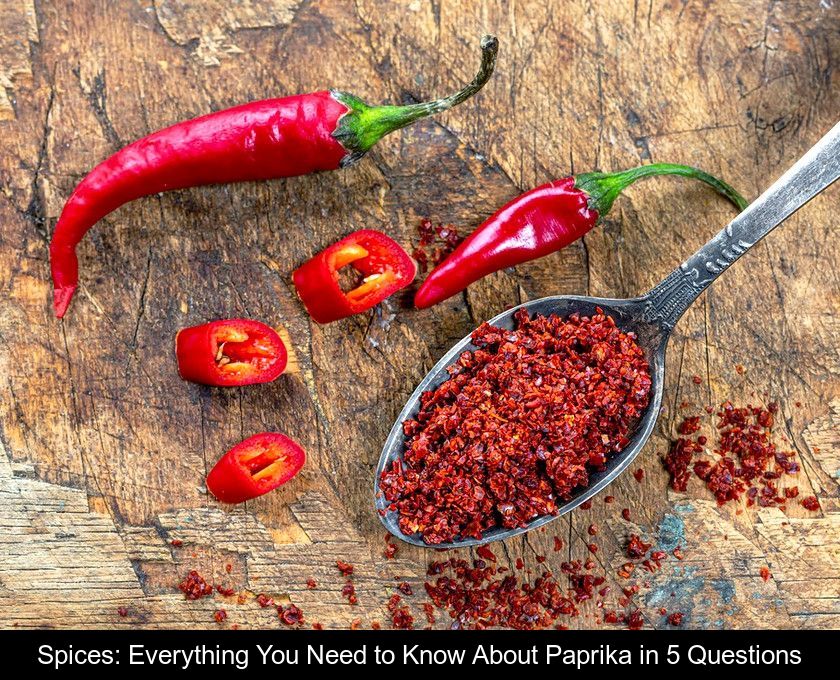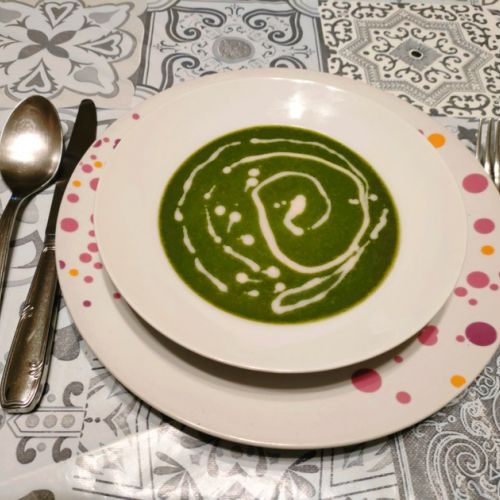Spices: Everything You Need To Know About Paprika In 5 Questions
Paprika, also known as sweet pepper or pimenton in Spanish, is an essential condiment in Hungarian cuisine. We invite you to discover this spice, with its slightly bitter, spicy, and sometimes smoky flavor, in 5 questions.
What is paprika?
Paprika comes in the form of a red powder. This spice is derived from the bell pepper or sweet chili (Capsicum annuum). More specifically, it is made from dried and ground peppers. Its taste, color, and level of spiciness can vary depending on the part of the pepper used.
What does paprika taste like?
There isn't just one, but several types of paprika. This spice can be made from the flesh of the bell pepper alone or can also include the seeds and stems of the fruit. However, the more seeds the mix contains, the stronger the final spice. That's why there are paprikas with varying degrees of heat.
This spice can also be smoked, like the pimenton de la Vera, a very popular paprika in Spain. It is the pimenton that gives Spanish chorizo its red color and spicy edge.
Conversely, the Hungarian paprika has a slightly sweet taste. It lacks the smoky aroma of the Spanish pimenton.
What is the difference between chili pepper and paprika?
There is a certain confusion between chili and paprika since this spice is also known as "sweet pepper". To complicate matters, these spices come from the same plant (the Capsicum annuum of the Solanaceae family) and the word "paprika" comes from Hungarian and means pepper in that language...
It is especially in terms of taste and on the famous Scoville scale used to assess the strength of spices that one can make the difference between sweet paprika, smoked paprika, hot paprika, and the different varieties of chilies. Sweet paprika is rated 1/10 on the Scoville scale while hot paprika is rated 6/10.
What is the origin of paprika?
If different names are used to refer to chili pepper and paprika, it is also because of the history and geographical origin of this spice.
The bell pepper is a fruit native to South America that was imported to Europe by Spanish colonists in the 15th century. This novelty quickly became popular in Spain and then in Hungary.
Hungarians initially cultivated the bell pepper as an ornamental plant. It wasn't until the beginning of the 18th century that the dried and ground fruit began to be used in cooking. At that time, it served as a replacement for pepper, which had become too expensive. Gradually, it became part of Hungarian culinary traditions.
Today, this condiment is the national spice of Hungary. The paprika produced in the regions of Szeged and Kalocsa even has a protected designation of origin.
5- How to use paprika in cooking?
In cooking, paprika has the dual benefit of enhancing dishes and adding color. This spice is thus used as a coloring agent for Spanish chorizo.
Hungary and Spain are the two main countries where this condiment is essential in local specialties. It is used to flavor Hungarian goulash as well as paprika chicken, Galician-style octopus, and patatas bravas.
For use in cooking, you can incorporate it into your meat and poultry stews, combine it with avocado in a homemade guacamole, or pair it with cumin in your oriental dishes like oriental beef meatballs.
In combination with garlic, this multifunctional spice also elevates spreads and marinades and gives an incomparable taste to oven-baked wedges and sweet potato fries. Just remember not to cook it too much, as this beautiful red powder can take on a bitter taste.











